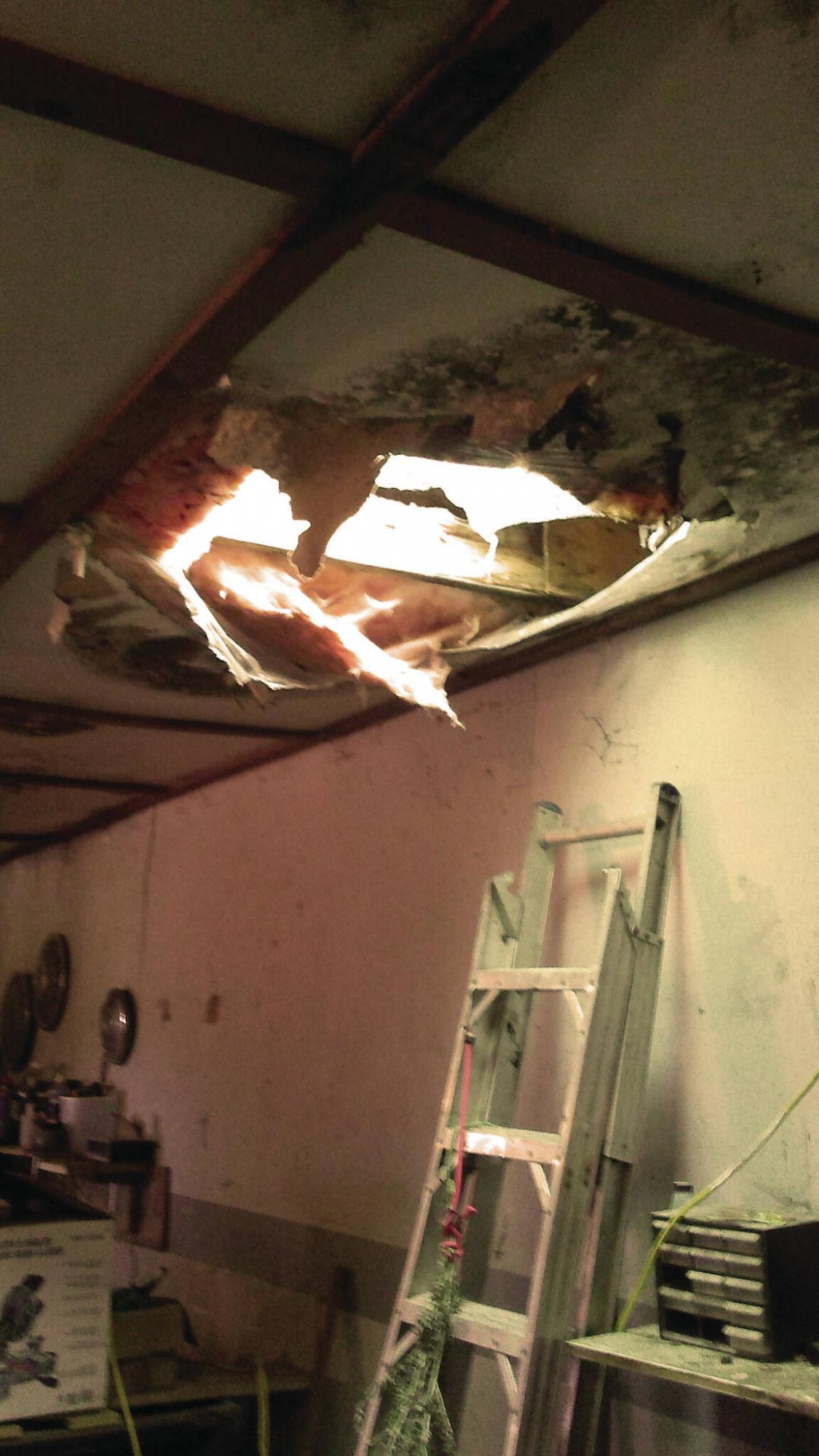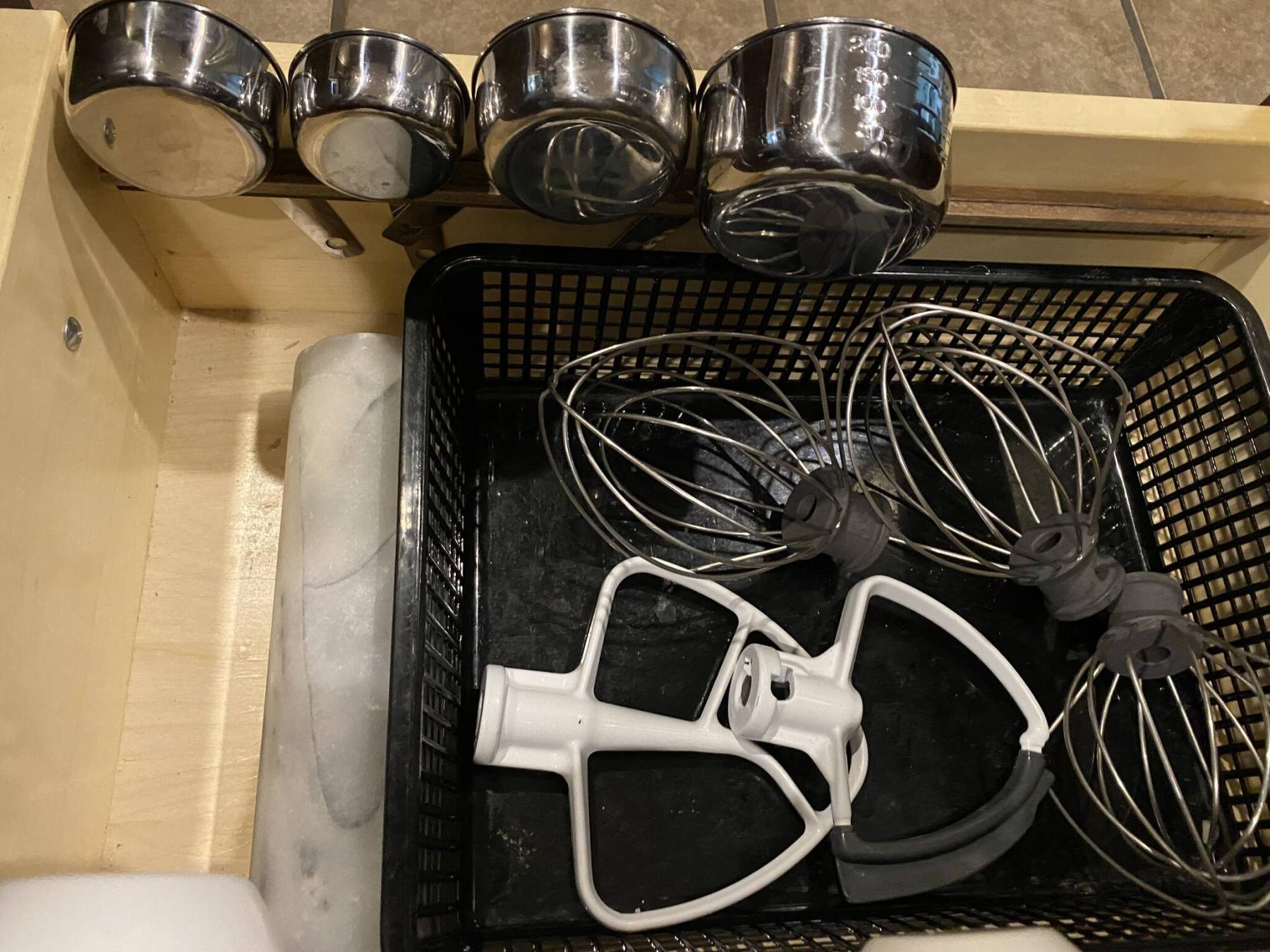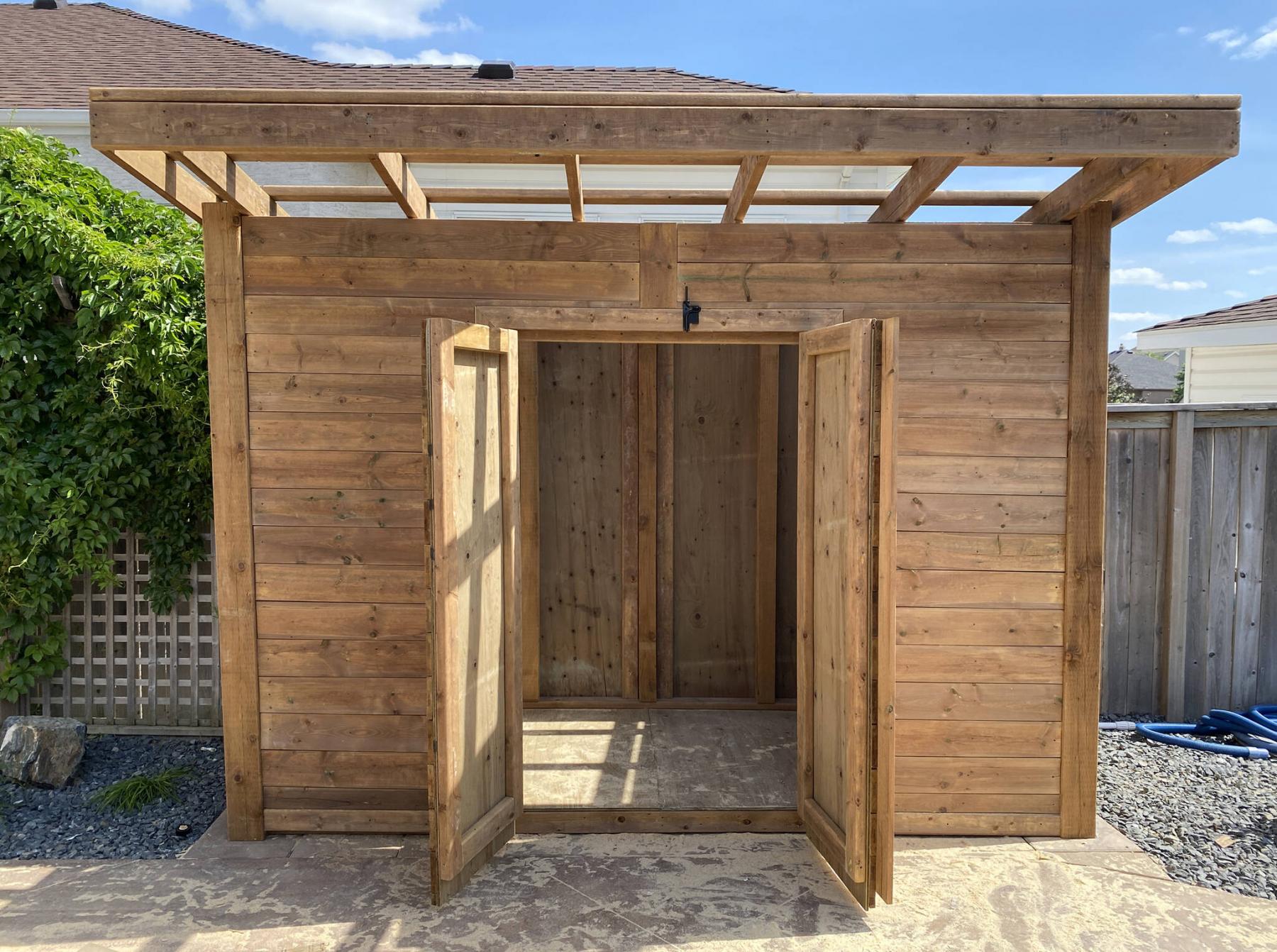Renovation & Design
Renovation & Design
Don’t let your dishwashing go to the dogs
Question — Is it OK to allow a dog to lick dirty plates in the dishwasher? I visited my friend, and her dog was “cleaning” the dishes as they were being placed in the dishwasher. I was horrified! Susan
Answer — This is a question with strong opinions on both sides. Some say they have shared food with their pet for years and find nothing wrong with it. Others feel ill, at the thought of eating off the same dish as one licked by an animal. It is not recommended to allow your pets to, “help wash the dishes.” Some of the food that humans eat is not safe for pets to eat. Also, some people would argue that bacteria on a dog’s tongue may not be healthy for humans, others will strongly disagree with that statement.
Question — My fiancé vacuums in half the time as me. Does the rate of speed matter when it comes to proper cleanliness? Diana
Answer — The slower the vacuuming, the more dirt and dust is extracted. Adjust the head so that it is low to the ground, put on your earphones, play music, and take your time.
Question — I accidentally used permanent marker on the dry erase whiteboard in my classroom. I scrubbed it with alcohol, but it is still there. I am now getting ready for a new school year. Any suggestions? Mark
Answer — Use a dry erase marker to colour over top of the permanent marker. The markings will quickly disappear.
Question — Help! I set a bottle of Lysol toilet cleaner on my bathroom countertop. It was wet on the bottom and left a white stain. Any suggestions for removal of stain. Val
Answer- Using a green scrubby pad and rubbing alcohol, scrub the area until the stain is gone. If the stain remains, the cleaner may have bleached the countertop, which will need to be recoloured.
Question — How can I prevent rice from sticking to the pot while cooking and ending up with a ball of “glump”? Tim
Answer — One way to prevent rice from sticking to the pot is to cook it in the microwave. For one cup of rice, add two cups of water. Season and cook in microwave on HIGH for 15 minutes or until water is absorbed, with no sticky mess. If you prefer to cook rice on the stove, rinse the rice before you boil it (until the water becomes fairly clear). Add a little oil or butter to the pot. For one uncooked cup of rice, add three cups of water, simmer for 15 minutes. You’ll get perfect rice every time.
Great Ideas!
Add a dab of glow in the dark paint to a light switch so that you can find it easily, in the dark. — Emily
Insert lemon peels into shoes to remove foot odour. — Emily
If you find that the sauce you are cooking is liquid and thin, thicken with a combination of flour and butter (add in small batches). Cornstarch is usually a good thickener, but mix it with a little water first. A little goes a long way. Some cooks use dried potato flakes as an emergency thickener. Allow the excess liquid to boil out of the sauce until it is reduced in volume. — Rajan
If your bathtub has a yellow or brown stain around the drain hole. Lay a dishcloth over the drain hole and soak the cloth with three per cent hydrogen peroxide. Next sprinkle a liberal amount of baking soda onto the cloth. Flip the cloth (baking soda side down) over the drain hole and leave for a few hours. Scrub with a nylon pad to remove the stain. — Katherine
Have a great suggestion or tip? Please send an email at: info@reena.ca. Reena Nerbas is a popular motivational presenter for large and small groups; check out her website: reena.ca.
Renovation & Design
Hydrangeas like morning sun, afternoon shade
Question: Where is the best place to plant hydrangeas to promote growth? Lynda
Answer: Those gorgeous flowers are best planted in areas of full morning sun, and shade in the afternoon. Make sure that the soil does not dry out, and that the flowers have enough moisture. Fertilize in the spring. When taking flowers inside, keep them moist, with plenty of sunlight, avoid overwatering.
Question: How often do you think a person should clean their bathroom? Also, do you have any tips for cleaning a ceiling fan? Annie
Answer: Cleaning the bathroom depends on how often the room is used. Wipe the faucet and counter after each use, but for the remainder of the washroom, usually once a week is standard practice. The following is a list of areas to clean, some are needed more often than others: bathmat, shower curtain/door, toilet, toilet lever, counter, bathtub/shower, light switches, doorknob, ceiling and floor vent covers, faucet, towels, toothbrush and soap holders, mirror, medicine cabinet, bathroom scale, floor and walls.
To clean a ceiling fan, dampen a pillowcase, slide each blade, one at a time, into the pillowcase and pull. After each blade is clean, toss the pillowcase into the washing machine and wash as usual.
Question: I was trying to ice a cake for my daughter’s birthday. I made buttercream icing, but the icing was full of bubbles which made it impossible for me to create a smooth finish. What went wrong? Joyce
Answer: Sounds like you overwhipped the ingredients — but the good news is that you can still save the icing. Fill a bowl with hot water and dip a metal spatula into the water. Wipe off the spatula and smooth the icing. The heat from the water will help those bubble disappear.
Pro tips: Make sure all ingredients are room temperature before mixing. For really white icing, use vegetable shortening. A bench scraper will give you the cleanest finish.
Feedback from caring contributors
Instead of pouring pasta into a strainer to drain the water, I reverse the process and put the strainer inside the pot, hold it in place. While leaving the pasta in the pot, I pour the water out through the holes. — Vanessa
I never knew where to store my sink sponge without it looking messy. I purchased a sponge holder with suction cups that I secured inside the sink to hold my sponge. The air circulates to dry the sponge, and my kitchen looks tidier. — Vanessa
Real vanilla (not imitation) is great for keeping ticks and mosquitoes away. Wipe vanilla onto skin and let dry. Mosquitoes will not bother you and your skin will smell sweet.— Elliot
Before cleaning the bathroom, put a washcloth mitten on your hand. Dampen the mitten and wipe the toilet, tank and the floor around the toilet; you will notice a bunch of dirt on the mitten. This step will make cleaning easier and more effective. — Lori
Flatten the roll of your toilet paper before placing it onto the holder so that the roll is difficult to spin. In my experience family members will use less toilet paper, which saves me money. — Lori
Note: Every user assumes all risks of injury or damage resulting from the implementation of any suggestions in this column. Test all products on an inconspicuous area first.
Have a great suggestion or tip? Please send an email at: info@reena.ca.
Renovation & Design
Wonky staircase a condo conundrum
Question — I live in a five-year-old townhouse condo, which has wooden stairs and a deck entering my front door. The first year I moved into my condo, my stairs were not level. Over the course of five years, my porch has dropped about seven centimetres. It’s pulling the vinyl siding off with it. I opened up the side of the porch to find very little room to see or get at the posts supporting the porch. These posts are not on piles or cement blocks, like my back stairs. Those had the same problem, which I fixed two years ago, with the leveling jacks they used. To describe the type of posts, the top has an angle supporting the beam, with a rod below that, connected to a U-channel embedded into the ground. It seems there may be a rod below that yet, that the channel is connected to. It is placed into the clay and very little crushed limestone.
Should these posts not have cement blocks supporting them, as with my back stairs? What I would like to know is if this is done properly and by code? And if not, what are my options? In order to fix this, I would have to take off my railing, deck boards, and remove a few joists to get at these posts and have enough room to apply more limestone and jack everything up.
— D. Brown
Answer: Repairing stairs, landings and decks on a condominium, which have settled, should be completed by experienced contractors, due to the safety concern if done improperly. For many condos, this should fall under a common element of the entire complex, which may only be partially your responsibility to maintain. Inquiring with the condo corporation board of directors for remediation should be your first and last steps in this potentially hazardous situation.
When a condominium is purchased in Manitoba, the seller is required to provide the buyer with up-to-date documents pertaining to various aspects of the building and corporation. One of the most important of these is the amount of money currently in the reserve fund, which is kept to pay for any major repairs and for items known as common elements. These common elements are portions of the entire complex that are jointly owned by everyone, such as hallways, sidewalks, driveways, roofs and most other items on the exterior of the buildings. It is also used for other costs associated with these common elements such as utilities, landscaping and other maintenance fees.
There should be further information in your condo documents outlining just what these common elements are and what is the responsibility of each individual unit owner. One reason for these rules to be defined is to maintain a consistent aesthetic to the entire complex. This is partially to prevent individual owners from choosing colours or products that are vastly different from their neighbour’s, which would give the complex a hodgepodge appearance if employed. Another consideration is for items such as your front deck and steps, which can be a major liability for the corporation if they are not safe.
I would suggest you find your condo documents that pertain to the common elements, and inquire with your condo board president about who is responsible for maintenance of the stairs. If it is indeed a collective issue, request that the condo board address this issue at its next meeting and hire someone to inspect the defect. If the board is reluctant, talk to your neighbours, as it is unlikely yours is the only unit affected. That should be followed by quotes from contractors and proper repairs. If the individual unit owners are required to keep the stairs in serviceable condition, then you should seek out a reputable general contractor for advice and a plan for repairs. There may also be requirements that the materials and design used for any future stairs match all the others, so keep that in mind if you are paying for upgrades.
As for the question about the original stairs being built to code, that issue is moot at this point in time. You are correct that any such structure should be constructed on solid footings, but that may vary considerably with each deck or stairs built. It is likely that the builder used concrete deck blocks or footings below the adjustable supports, but these have sunken into the soil and are now invisible. Lifting and levelling the stairs and deck may be possible by careful adjustment, but it is equally as likely that the support posts will simply sink further if the soil is not stable.
Until recently, the last several years have been extremely dry in our area, leading to major shrinkage in our clay-based soil. That, in addition to the soil around your home likely being fresh back-fill, is the probable cause of the settling stairs, not missing footings.
Because a defect in support for exterior stairs, decks, balconies and other similar structures can be a major safety hazard, repairs should be done with great care. It is not something you should take upon yourself, to prevent blame being directed upon you should someone get hurt after repairs are complete. That would normally be the burden of the condo corporation and board of directors, which are undoubtedly properly insured for such an occurrence.
Despite the inadequacy of the original supports for your townhouse condo’s front stairs and deck, levelling and repairs should not normally fall on your shoulders. Reviewing your condo documents should outline this issue, which is typically a common element. If that is the case, demanding timely inspection and repairs from your condo board is the correct course of action to make your stairs level and safe.
Ari Marantz is the owner of Trained Eye Home Inspection Ltd. and a Registered Home Inspector (RHI)(cahpi.ca). Questions can be emailed to the address below. Ari can be reached at 204-291-5358 or check out his website at trainedeye.ca.
trainedeye@iname.com








